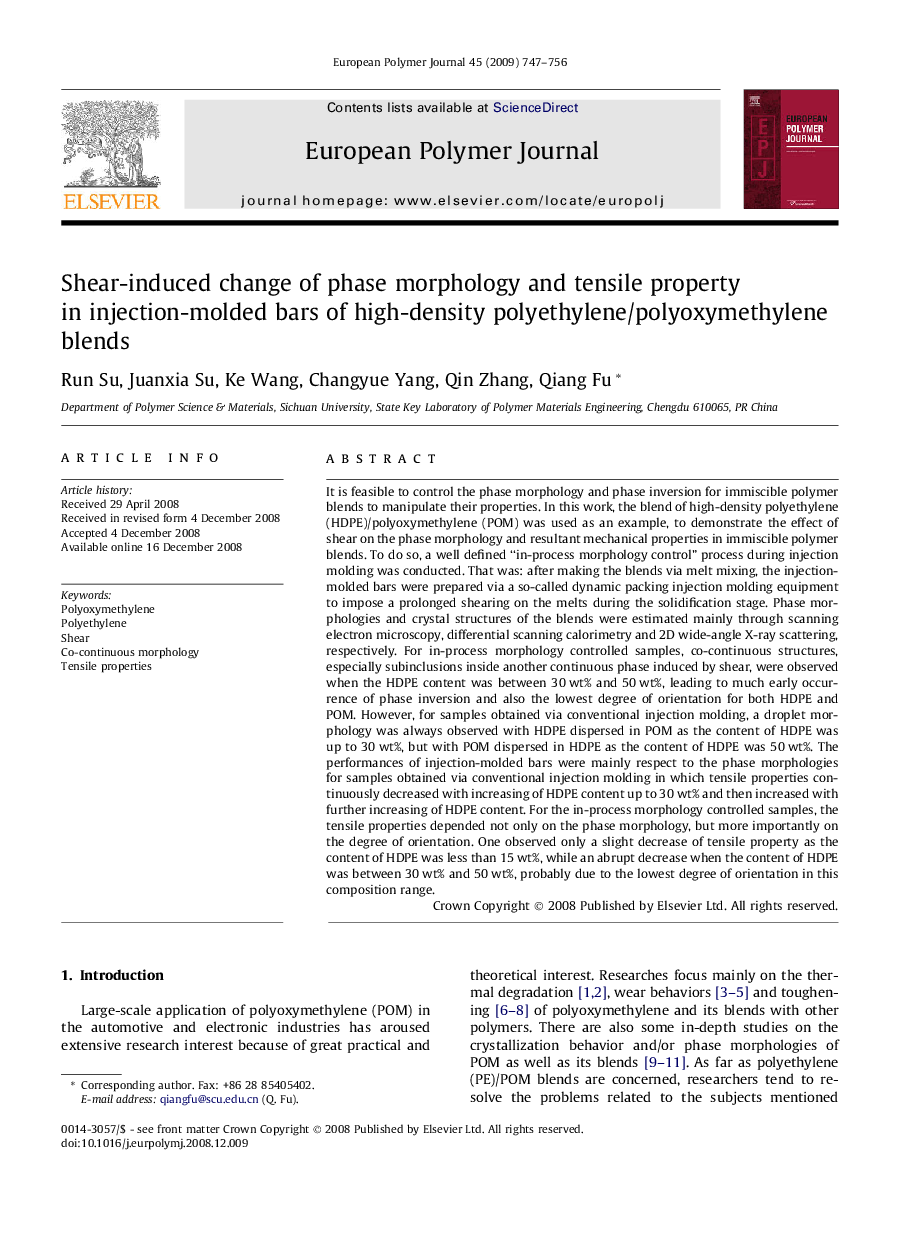| کد مقاله | کد نشریه | سال انتشار | مقاله انگلیسی | نسخه تمام متن |
|---|---|---|---|---|
| 1402812 | 984787 | 2009 | 10 صفحه PDF | دانلود رایگان |

It is feasible to control the phase morphology and phase inversion for immiscible polymer blends to manipulate their properties. In this work, the blend of high-density polyethylene (HDPE)/polyoxymethylene (POM) was used as an example, to demonstrate the effect of shear on the phase morphology and resultant mechanical properties in immiscible polymer blends. To do so, a well defined “in-process morphology control” process during injection molding was conducted. That was: after making the blends via melt mixing, the injection-molded bars were prepared via a so-called dynamic packing injection molding equipment to impose a prolonged shearing on the melts during the solidification stage. Phase morphologies and crystal structures of the blends were estimated mainly through scanning electron microscopy, differential scanning calorimetry and 2D wide-angle X-ray scattering, respectively. For in-process morphology controlled samples, co-continuous structures, especially subinclusions inside another continuous phase induced by shear, were observed when the HDPE content was between 30 wt% and 50 wt%, leading to much early occurrence of phase inversion and also the lowest degree of orientation for both HDPE and POM. However, for samples obtained via conventional injection molding, a droplet morphology was always observed with HDPE dispersed in POM as the content of HDPE was up to 30 wt%, but with POM dispersed in HDPE as the content of HDPE was 50 wt%. The performances of injection-molded bars were mainly respect to the phase morphologies for samples obtained via conventional injection molding in which tensile properties continuously decreased with increasing of HDPE content up to 30 wt% and then increased with further increasing of HDPE content. For the in-process morphology controlled samples, the tensile properties depended not only on the phase morphology, but more importantly on the degree of orientation. One observed only a slight decrease of tensile property as the content of HDPE was less than 15 wt%, while an abrupt decrease when the content of HDPE was between 30 wt% and 50 wt%, probably due to the lowest degree of orientation in this composition range.
Journal: European Polymer Journal - Volume 45, Issue 3, March 2009, Pages 747–756